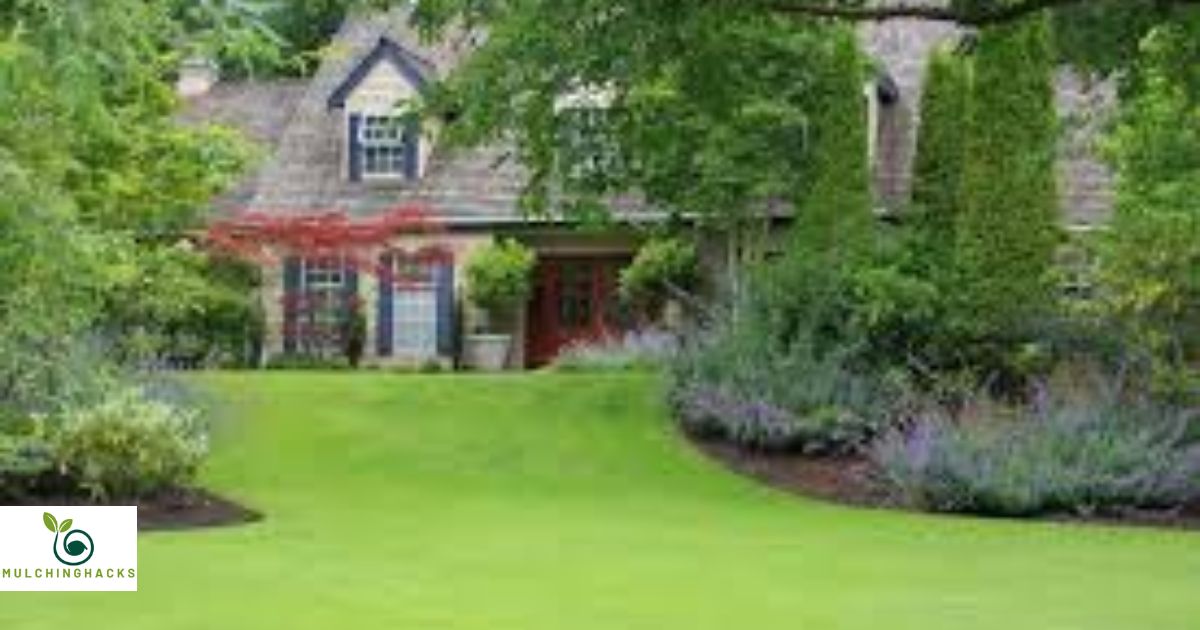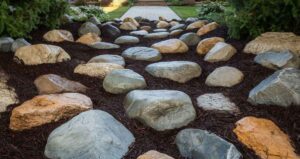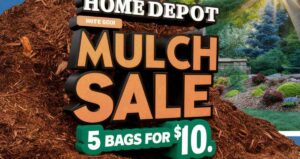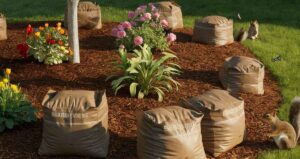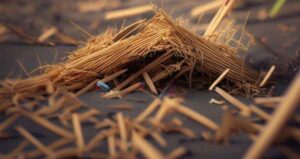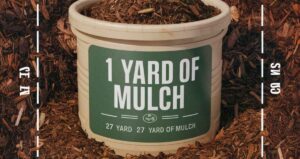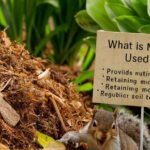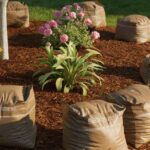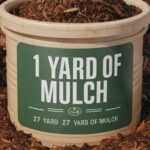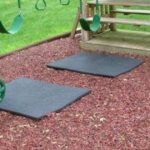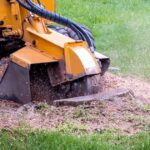Effectively keeping weeds out of mulch beds involves regular maintenance, proper mulch depth, and the use of weed barriers or pre-emergent herbicides for a tidy and thriving landscape.
Elevate your gardening game by mastering the art of weed control How To Keep Weeds Out Of Mulch Beds? With strategic mulch depth, routine maintenance, and the savvy use of weed barriers or pre-emergent herbicides, you can cultivate a vibrant garden free from the nuisance of weeds, ensuring your plants thrive in a pristine landscape.
Maintaining weed-free mulch beds is simple with a few smart strategies. Start by applying a sufficient layer of mulch to suppress weed growth. Regularly inspect and hand-pull any emerging weeds. Consider using weed barriers or pre-emergent herbicides for added prevention. This proactive approach ensures a neat and flourishing mulch bed.
Table: Strategies for Weed-Free Mulch Beds
Mulch beds enhance the aesthetics of gardens, but pesky weeds can mar their beauty. This guide unveils effective strategies for maintaining weed-free mulch beds, ensuring a thriving and picturesque landscape.
| Strategies | Description |
| Adequate Mulch Depth | Apply a sufficient layer of mulch to suppress weed growth. |
| Regular Inspection and Hand-Pulling | Routinely inspect mulch beds, hand-pulling any emerging weeds to prevent their spread. |
| Weed Barriers | Utilize weed barriers to create an additional layer of defense against weed intrusion. |
| Pre-Emergent Herbicides | Consider using pre-emergent herbicides to prevent weed growth before it starts. |
Implementing these strategies ensures a clean and flourishing mulch bed, elevating the overall appeal of your garden.
The Importance of Mulch Depth in Weed Prevention
Maintaining an adequate depth of mulch is a fundamental aspect of keeping weeds at bay in mulch beds. A layer of 2 to 4 inches serves as a natural barrier, suppressing weed germination by limiting access to sunlight and the soil. This initial line of defense creates an environment that hinders weed growth, offering a simple yet crucial strategy for weed prevention.
Mulch depth is not only about aesthetics but plays a functional role in landscaping. As it decomposes over time, mulch also contributes organic matter to the soil, enhancing its fertility. Therefore, by ensuring the right mulch depth, you not only prevent weeds but also nurture a healthier and more resilient garden environment.
The Art of Regular Inspection and Hand-Pulling
Weed vigilance is key to maintaining the pristine condition of mulch beds. Regular inspections should be a routine practice, allowing you to identify and hand-pull any emerging weeds promptly. This hands-on approach not only addresses existing weed issues but also serves as a preventive measure, minimizing the potential for weed spread.
Hand-pulling weeds is a manual method that avoids the use of herbicides, making it an eco-friendly option. It provides an opportunity to inspect the health of your plants and the overall condition of the mulch bed.
By incorporating this practice into your garden maintenance routine, you actively contribute to the cleanliness and vibrancy of your outdoor space.
The Role of Weed Barriers in Mulch Beds
Weed barriers, such as landscape fabric, add an extra layer of defense against weed intrusion in mulch beds. Placed beneath the mulch layer, these barriers create a physical obstacle that deters weeds from penetrating the soil. This strategy is useful in areas prone to aggressive weed growth, offering a more robust defense mechanism for long-term weed prevention.
Weed barriers not only inhibit weed growth but also contribute to moisture retention in the soil. By preventing weeds from competing for water with desirable plants, these barriers create a more favorable environment for the healthy development of your garden. The strategic use of weed barriers aligns with an integrated approach to landscaping, addressing both weed control and soil health.

Preventive Measures with Pre-Emergent Herbicides
For a targeted approach to weed prevention, pre-emergent herbicides are valuable tools. Applied before weed seeds germinate, these herbicides create a protective barrier in the soil, inhibiting the early stages of weed growth. This proactive measure minimizes the need for extensive hand-pulling and addresses weed problems at their root.
Pre-emergent herbicides are particularly useful in large mulch bed areas where manual weeding may be impractical. However, it’s essential to choose herbicides carefully, considering their impact on the environment and other plants. When used judiciously, pre-emergent herbicides can complement other weed prevention strategies, contributing to the overall health and longevity of your mulch beds.
Understanding Mulch Types for Weed Control
Not all mulches are created equal when it comes to weed prevention. Different mulch types offer varying degrees of effectiveness in suppressing weed growth. Understanding the properties of mulch materials allows you to make informed choices that align with your weed control goals and overall landscaping preferences.
Hardwood mulch, for instance, is known for its ability to create a dense layer that inhibits weed growth. Pine straw, on the other hand, interlocks well, forming a natural barrier against weeds.
By choosing the right mulch type based on your garden’s specific needs, you enhance the effectiveness of your weed prevention efforts, creating a more resilient and visually appealing landscape.
Mulch Beds: The Impact of Soil Preparation
Proper soil preparation sets the foundation for effective weed control in mulch beds. Clearing the area of existing weeds and ensuring the soil is well-drained and healthy create an environment that discourages weed growth. This preparatory step is essential before applying mulch, allowing you to start with a clean slate.
Soil preparation involves removing any existing weeds, roots, or debris from the designated mulch bed area. This clears the way for the subsequent application of mulch and ensures that the soil is not inadvertently harboring weed seeds or competing vegetation.
Mulch Beds and Watering Techniques for Weed Management
Proper watering techniques play a significant role in weed management within mulch beds. Watering at the base of plants using techniques such as drip irrigation minimizes water contact with mulch surfaces, creating an environment less conducive to weed germination. This strategic approach conserves moisture for desirable plants while deterring weed growth.
Mulch beds benefit from a deep and infrequent watering schedule. This encourages the development of deep root systems for plants, making them more resilient and better equipped to compete with potential weeds.
By combining mindful watering practices with other weed prevention strategies, you create a harmonious environment in which your garden thrives while weeds struggle to take root.
Mulch Beds and Seasonal Weed Management
Seasonal variations impact the prevalence and growth of weeds in mulch beds. These patterns allow for strategic weed management throughout the year. In spring and early summer, when weed growth is most vigorous, a more proactive approach to mulch bed maintenance may be necessary.
During the growing season, routine inspections, hand-pulling, and the application of preventive measures like pre-emergent herbicides. In contrast, fall provides an opportunity for thorough cleanup, removal of debris, and the application of a fresh layer of mulch to prepare for the following growing season. Tailoring your weed management strategies to the season enhances their efficiency and contributes to the overall health of your mulch beds.
Cultivating Healthy and Weed-Free Mulch Beds
Maintaining weed-free mulch beds is a multifaceted task that requires a combination of strategic approaches. From ensuring proper mulch depth to utilizing preventive measures like weed barriers and herbicides, each strategy plays a unique role in creating a thriving and visually appealing landscape.
The seasonal variations and considering soil preparation and watering techniques further enhance the effectiveness of your weed management efforts. By incorporating these strategies into your landscaping routine, you cultivate healthy and weed-free mulch beds, transforming your outdoor
FAQ,s
Why is mulch depth important for weed prevention?
Adequate mulch depth, around 2 to 4 inches, acts as a natural barrier, suppressing weed germination by blocking sunlight and soil access.
How often should I inspect mulch beds for weeds?
Regular inspections are crucial. Hand-pull emerging weeds promptly to prevent their spread, contributing to both existing weed control and prevention.
Are weed barriers effective in mulch beds?
Yes, weed barriers, like landscape fabric, provide an additional layer of defense, creating a physical obstacle that deters weed penetration into the soil.
Can pre-emergent herbicides prevent weed growth?
Yes, pre-emergent herbicides, applied before weed seeds germinate, create a protective barrier in the soil, hindering the early stages of weed growth.
Conclusion
Mastering the art of weed prevention in mulch beds involves a holistic approach, combining strategies like adequate mulch depth, regular inspection, weed barriers, and judicious use of pre-emergent herbicides. By the significance of these techniques, you not only tackle existing weed issues but also create a proactive defense against future infestations.
Whether it’s hand-pulling emerging weeds, employing landscape fabric, or opting for preventive herbicides, each strategy contributes to the overall health and beauty of your mulch beds. Cultivating a weed-free landscape requires diligence and a tailored approach, ensuring that your outdoor spaces thrive while unwelcome weeds are kept at bay.
